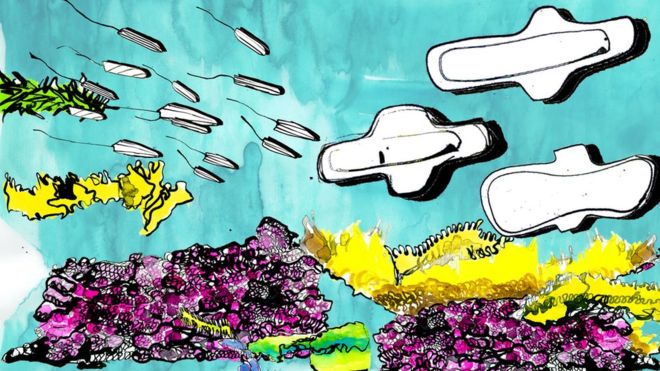Only women know how messy a period can be, and they have to face it all through their early or late 50s. Throughout the years and today, also period has been overlooked as something terrible happening to women. Though there are women fighting this cause every day, there are some patriarchal countries that have accepted periods as being a normal function of a woman’s body. Over the years, we have evolved from pads to tampons, women have tried everything to get rid of this monthly release. Even if these practices are somehow considered as being harmful both to the women and the environment, it has not exactly stopped. Most women still face the wrath of a leaky pad or an infected tampon. However, the advent of menstrual cups has eased the problem that women had to face.

What is a menstrual cup?
A menstrual cup is a feminine hygiene device that is inserted in the vagina during menstruation to collect menstrual fluid, i.e., blood from the uterine line, to prevent leaking onto clothes. Menstrual cups are usually made of flexible medical silicone that is shaped like a bell with a stem that is used for insertion and removal. The cup can be emptied every 4 to 12 hours depending on the amount of flow; it can be removed, drained, rinsed, and re-inserted. After each period, the cup should be boiled for at least 5 minutes and stored in a hygienic place for use during the next cycle. Menstrual cups are a safe option compared to other forms of menstrual hygiene.

How do periods affect the environment?
It is essential to know that not only women get their periods but also transgender, inter-gender, and gender-queer people. Every month women who menstruate turn to traditional tampons and pads and some to the cloth lest they know that these menstrual products impact the environment in various ways which we will discuss in this blog.
Did you know that commercial menstrual products come in a packaged plastic, tampons use plastic applicators, and pads contain a plastic lining to prevent blood from leaking? Well, neither did I!
Impacts of Menstrual Hygiene Products on the Environment – A traditional pad and tampon go through anywhere from 11 to 30 hygiene products per menstrual cycle. People who use tampons burn through 5,000 -14,000 tampons throughout their lifetimes. If you multiply this by the number of menstruating people on earth, then you realize how this waste can be damaging to the environment. The resources used in the production, as well as the environmental impact of shipping menstrual products around the globe, impact the environment. From using trucks to transport these goods to ships, the carbon emissions are increasing day by day. Even if a large proportion of these products utilize cotton, a renewable resource, there are some which use plastic.

Alternatives to tampons and pads – The option to traditional tampons and pads is the menstrual cup. Made of silicon, they are re-usable and can last longer than a tampon or pad. Though it is higher in price than a box of tampons, it is a one-time buy as the cups are washable and lasts for up to 10 years. The other alternative is the use of pieces of old saris and other cloths to manage the menstrual flow. Used earlier by our grandparents and parents, this small and innovative leap is a sustainable and vegan alternative to tampons and pads. However, some studies suggest that tampons and pads are more reliable than cloths.
Facts are comparing the green-ness of menstrual cups to more feminine hygiene products; some are listed below:
• There is the extra packaging – It is known that pads and tampons are full of plastic, even if it is not visible. Menstrual cups diminish the additional packaging issue, which means there is less waste in the landfills. Though, there is some tampons company that have highlighted the fact of being more environmentally responsible in the tampon packaging.
• Pads are harmful – It is a fact that quite a few people know, that pads contain toxic chemicals. The adhesive used to make the pad stick to your underwear is an environmentally harmful pollutant.
• Tampons are chemically loaded – Tampons contain a chemical called dioxin which is harmful both to the environment and to you. It is highly toxic that can cause problems in the reproduction development and the immune system, and lead to cancer. As a persistent environmental pollutant, it can remain the atmosphere for many years.
• More harm than gain – By now, you have understood that pads and tampons are harmful to the environment as it is loaded with unnatural chemicals. These chemicals get soaked up by the earth and released as pollution into the groundwater and air. Menstrual cups are considered bliss, and it is a fantastic solution. Aside from being 100% organic and eco-friendly, these cups take their impact seriously from their production to the packaging. These silicone menstrual cups are the redesigned version of the version that existed almost 80 years ago. One thing is for sure that menstrual cups are not going off the market so soon!

